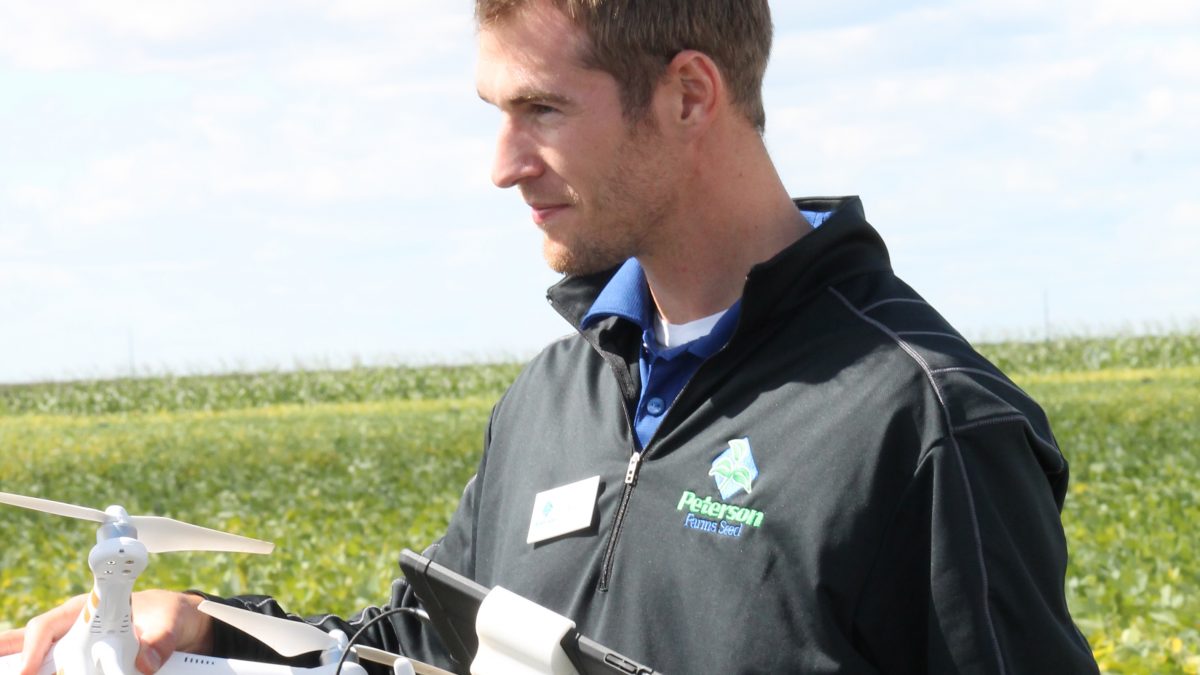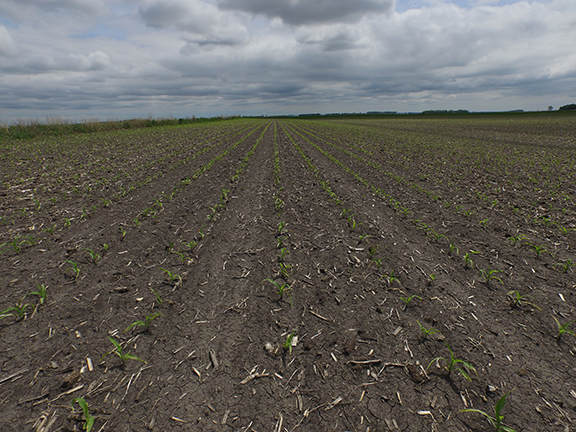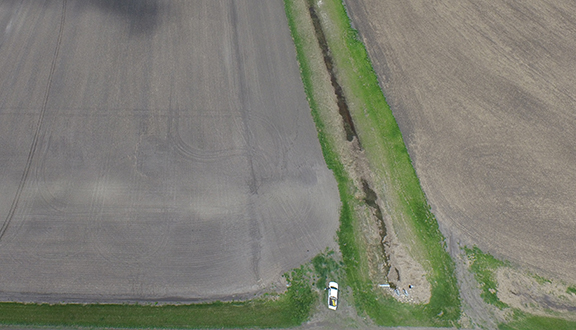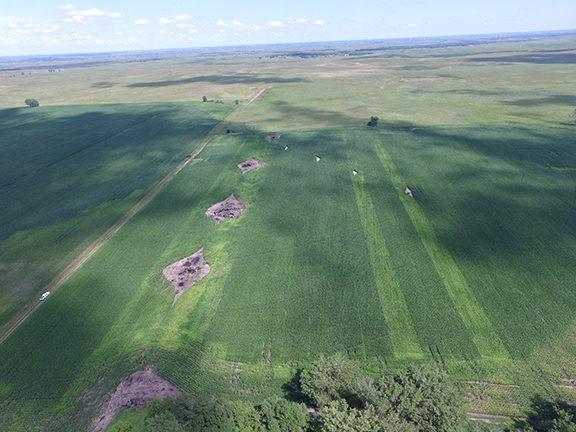Nolan’s 4 Tips for Drone Scouting

You’ve purchased a small quadcopter UAV, and are having fun taking pictures. But how will you use the drone imagery to make actionable decisions on your farm throughout the season? Over the past few years, I’ve found some key times for drone scouting. I offer a few tips here.
Scout at V5 Stage
You’re probably eager to see how the crop looks from the air, but you may be in for a surprise. When driving along a newly emerged corn field, it looks fairly green with growth.
But from the air, soil is much more visible than the plants are.
My advice: Wait to scout with your drone until corn reaches the V5 stage. At V5 stage, scout for emergence and stand.
A traditional stand count provides only a general idea of your stand since it does not account for variability of the field. The scouting imagery from a drone provides a much better representation of your field as a whole. I recommend using an aerial image and a traditional stand count together to get an accurate idea of emergence.
Scout during the season
Later in the season, drone scouting can be beneficial for identifying stress from water, disease and low nitrogen or other nutrient deficiencies. From drone images, you may be able to detect areas where nitrogen loss is more prevalent or even see if an entire field is short on nitrogen.
The above image shows areas of a field that were intentionally skipped with the side dresser because of a removed tree line and irrigation wells. The yellowing stressed corn is very prominent in this image. Detecting deficiencies early enough in the season may give you the opportunity to side-dress as a rescue treatment.
Scout before harvest
Pre-harvest imagery, taken when corn starts to dry down, is a great way to see stressed areas that may not have been visible during the season. These images may also help determine the rates of dry down for different maturities on your farm.
Scout after harvest
And don’t forget to scout after the crop is off and before the field is worked. These images can be critical to assess. Since the soil hasn’t been tilled or worked in any way, aerial images are a great way to see varying soil types within your field. They also show the slope and drainage (or lack of) in your fields, especially after rain events.
I believe a drone is a vital piece of equipment in your scouting toolbox. Now is the time to get out and use it to scout your fields. As drone technology advances and research continues, there will be many more ways to utilize these amazing machines in agriculture.














